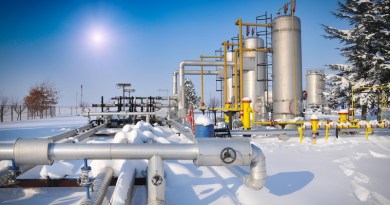
The integral role of buildings in smart sector integration
Europe is standing at the threshold of a paradigm shift: the transition from a centralised, fossil fuel-based, and highly consuming energy system towards a digitised and decentralised, interdependent and consumer-focused system that is powered by renewable energy.
The European Commission will shortly deliver its strategy for a smart sector integration, which will link sectors from buildings, transport, and industry in order to accelerate decarbonisation and improve living conditions for all Europeans.
But how important are buildings to smart sector integration? The answer in short, is, very.
Micro energy-hubs: Catalysing energy system integration
Buildings are responsible for 40% of Europe’s energy consumption and 36% greenhouse gas emissions; in addition, they are also crucial for our comfort and well-being as Europeans spend 90% of their time indoors. Buildings have a central role in enabling the transformation towards achieving an integrated energy system while providing better living conditions for citizens across Europe.
Traditionally, buildings have been designed and understood as static and high energy consumers, connected in a unilateral way with the energy system. In an integrated, decarbonised system, however, the role of our offices, hospitals and homes will no longer be static: they are already transitioning towards becoming active micro energy-hubs that are flexibly connected and synchronised, able to produce, store and consume energy efficiently.
Micro energy-hubs contribute to the stabilisation of a cleaner energy system through reducing overall energy demand and therefore the size of the energy system, making it easier and cheaper to decarbonise. At the same time, they increase storage capacity and flexibility, enabling a larger uptake of renewable energy and electric vehicles, while decreasing fossil fuel dependency. Very low energy buildings also allow the integration of the most promising renewables-based supply decarbonisation technologies such as heat pumps or the latest generation of district heating and cooling, therefore contributing to a smart integration with the power and heat networks.
Micro energy-hubs also carry huge societal benefits.
By empowering end-users with the control over their own home’s energy, smart business models and cost-effective solutions will arise and will be a key element towards greening the economy with reduced energy bills and improved working and living conditions for citizens.
Implemented integrated energy planning while putting efficiency first
While buildings are the catalyst, achieving this overall vision of an integrated, decarbonised energy system requires tight integrated energy planning, with an eye to exploiting synergies between different areas including supply and mobility at the local, or district, level. Buildings are the key construction components of urban areas: smartening and interconnecting them within a district perspective increases resilience for shocks in demand or supply overall, and can provide a boost for the economy, encouraging new, innovative business models and job opportunities.
The starting point of this integrated planning is the principle of efficiency first (E1st), as an enabler for long-term energy, resources and investment planning, ensuring effective energy system integration and decarbonisation. Originally enshrined in the Clean Energy for All package in 2018, E1st means recognizing that demand is not bound to increase, and supply should not automatically be scaled up to meet it1. In the context of the smart sector integration strategy, the principle of E1st should inform energy infrastructure decisions by requiring the consideration of demand options as alternatives for investing in generation.
Integrated policymaking for an integrated energy system: Coordinating smart sector integration with the Renovation Wave
We have known for a long time that tackling climate change requires monumental system change. The Strategy for smart sector integration is paramount to decarbonisation, as linking sectors will allow optimisation of the energy system as a whole. We are working towards achieving a veritable paradigm shift, with buildings at the heart of this transition.
It is therefore crucial that policies work together. Just as the energy system should no longer be viewed as a series of disparate parts working in isolation, our policymaking requires tight coordination.
Considering the urgency of decarbonisation, we must prioritise close alignment between the Strategy for smart sector integration and the Renovation Wave initiative with the principle of efficiency first at the foundation.
Within this context, the Renovation Wave provides the opportunity to take a holistic approach, by proposing measures that reduce energy and emissions in the building sector through accelerating the rate of deep renovations, but also by ensuring that buildings become energy-system responsive. The Renovation Wave must be the catalyst for the transformation, and it is a unique chance to drive innovation and create new opportunities in the building sector while making European buildings fit for climate-neutrality and creating better living conditions for all Europeans.




